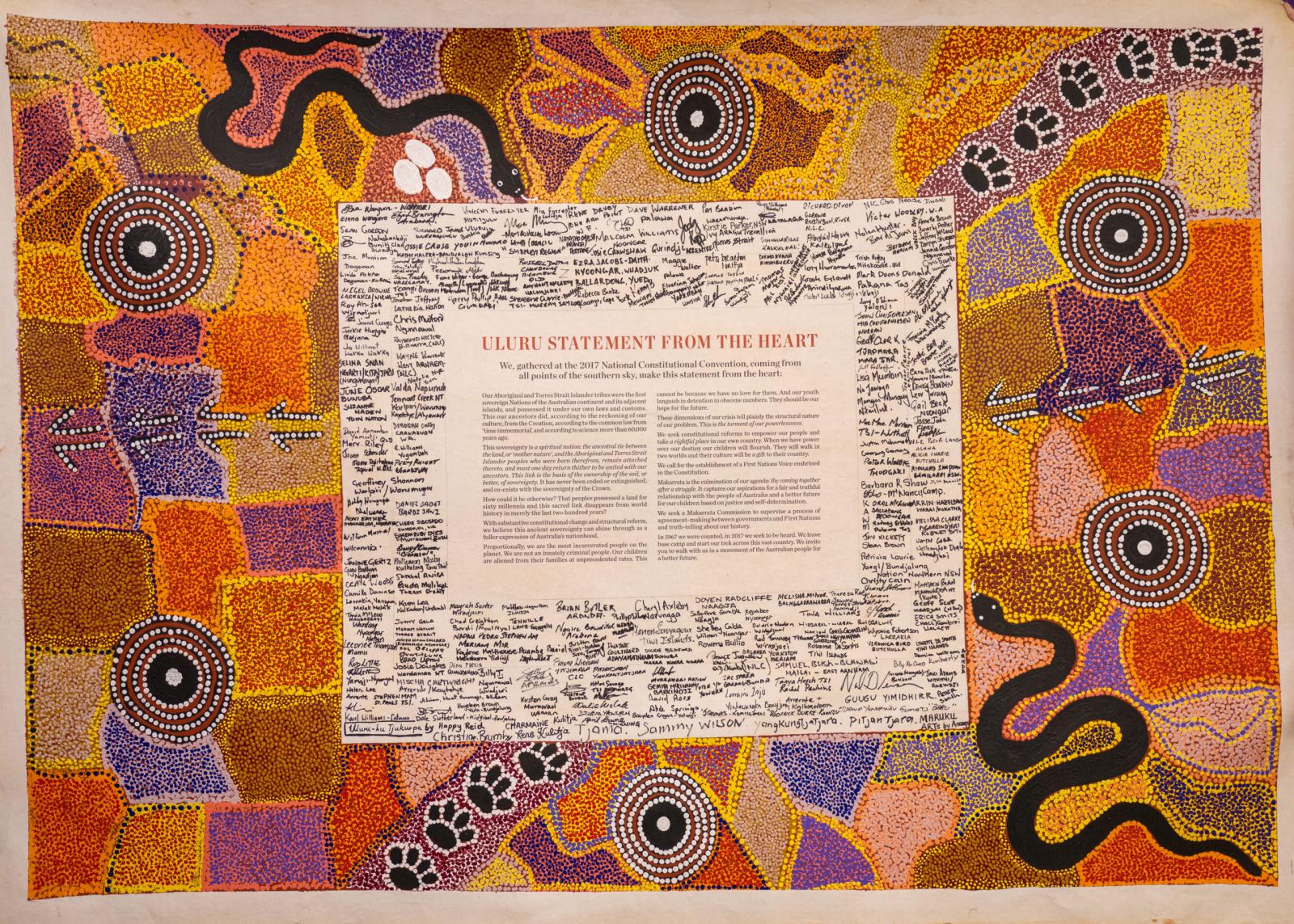
The Catholic Church, through its recent Plenary Council, has been a key institutional supporter of a Yes vote in the upcoming referendum to amend the Constitution to institute a new Aboriginal and Torres Strait Islander Voice.
The Voice will be sited in a new chapter IX and will have the authority to “make representations to the parliament and the executive government of the Commonwealth on matters relating to Aboriginal and Torres Strait Islander peoples.”
While the Voice is now before a parliamentary inquiry, this model has significant and obvious problems. I will explain these issues and my own proposed Voice solution later.
However, it is of prime importance to see why Catholics support the Voice, in the context of our national reconciliation with our indigenous peoples for Australia’s original sin of their dispossession.
As Catholics, we are people of tradition, reverent towards our past, and mindful of our ancestors’ triumphs—and their sufferings.
In this respect, we should begin by noting that our excellent Constitution still has its shortcomings, most notably, it does not expressly recognise our indigenous peoples.
Such recognition did occur in other British colonies and was done in the (Catholic) French, Spanish, and Portuguese empires governed by Roman law.
Indeed, over 250 years before the New South Wales colony, the Spanish Dominican priest, Francisco de Vitoria, argued the cause of indigenous peoples in “the new world.”
These arguments would culminate in Pope Paul III’s bull Sublimis Deus of 1537, which held that indigenous peoples of the “new world” were human beings to be respected and not enslaved.
“Indians and all other people who may later be discovered by Christians, are by no means to be deprived of their liberty or the possession of their property, even though they be outside the faith of Jesus Christ,” Paul III wrote.
Paul III went even further in Pastorale Officium, ruling that those who enslaved native populations would be automatically excommunicated.
King George III would later give similar commands concerning the Indigenous peoples of North America under British rule. His Royal Instructions for New South Wales imposed the same policy, in substance, to govern the relationship between the Crown and our indigenous peoples:
“[I]f any of Our Subjects shall wantonly destroy them, or give them any unnecessary Interruption in the exercise of their several occupations. It is our Will and Pleasure that you do cause such offenders to be brought to punishment according to the degree of the Offence.”
I mention this history because this original understanding, which existed elsewhere, should have governed the British settlement of Australia from January 1788 onwards.
Sadly, the papal and royal instructions were never fully realised here. The Voice offers us a chance to remedy what was not done, which enjoins us to take care in the model we take to the referendum later this year.
If we do not have a model most Australians can support, our parliamentarians will impose upon us the abominable choice of either voting for a hazardous constitutional alteration or voting against our indigenous brothers and sisters.
The following critique of the significant problems with the current model and referendum process should be received in this spirit.

Problems with the Voice model
Firstly, that so much of the work of the Voice has been done by “working groups” and not by the elected parliament has been an unacceptable abdication of the parliament’s constitutional duty.
Secondly, placing indigenous recognition at the Constitution’s end in a new chapter IX – and not in the preamble—makes no sense.
Our Constitution divides the Commonwealth’s powers between the parliament (chapter I), Crown and executive government (II) and judicature (III).
To site the voice in its own chapter IX will give it an enduring constitutional existence that rivals these other powers.
Those without legal training may therefore not realise how hazardous is the language of the proposed s129(ii), in which the Voice “may make representations to the Parliament and the Executive Government of the Commonwealth on matters relating to Aboriginal and Torres Strait Islander peoples.”
Sited in its own chapter, the Voice will have a constitutional mandate to engage with the parliament and executive well beyond the parliament’s power to control through a proposed s129(iii): “the Parliament shall, subject to this Constitution, have power to make laws with respect to matters relating to the Aboriginal and Torres Strait Islander Voice, including its composition, functions, powers and procedures.”
The High Court has commendably interpreted the text of the Constitution in its “ordinary and natural sense” for over a century.
Future courts will thus read any laws made by Parliament under s.129(iii) as subject to (ii)’s operation. Indeed, one can be sure that future courts will not restrict or qualify the operation of a Constitutional alteration that entrenches a new body into a new chapter of the Constitution.
If erected in this way, the Voice will exist outside and beyond both the parliament’s power to abolish and the executive government’s power to direct, becoming a fourth Constitutional “locus” if not a de facto fourth branch of government.
An alternative proposal to put the Voice under the Crown
In answer to these and other problems, I have submitted to the current parliamentary inquiry a Voice model that places this new body in chapter II—under the Crown—where it would be convened by the Governor-General as a permanent advisor to the executive government on indigenous matters.
Such a placement would assist, also, in any future negotiations of a Makarrata or treaty.
An alteration that sites the Voice in chapter II with the Crown will be constitutionally safe, and, also, ensure indigenous advice is given on the policies of the Australian government that directly affect them.
We are as Catholics part of a faith tradition that believes in both/and rather than either/or. We ought to be able to support the moral case for Yes, while requiring a well-drafted amendment as a condition of our vote.
As the referendum process commences, we as Catholics are called upon to be both good citizens who will also “contribute along with the civil authorities to the good of society in a spirit of truth, justice, solidarity, and freedom” (CCC 2239).
In this spirit, we can be both the protectors of our venerable Constitution and people in solidarity with our indigenous sisters and brothers. May we of Terra Australis be a just people worthy of the blessing of this “great south land of the Holy Spirit.”
Gray Connolly is a Sydney Barrister and lecturer in Australian Constitutional Law.
